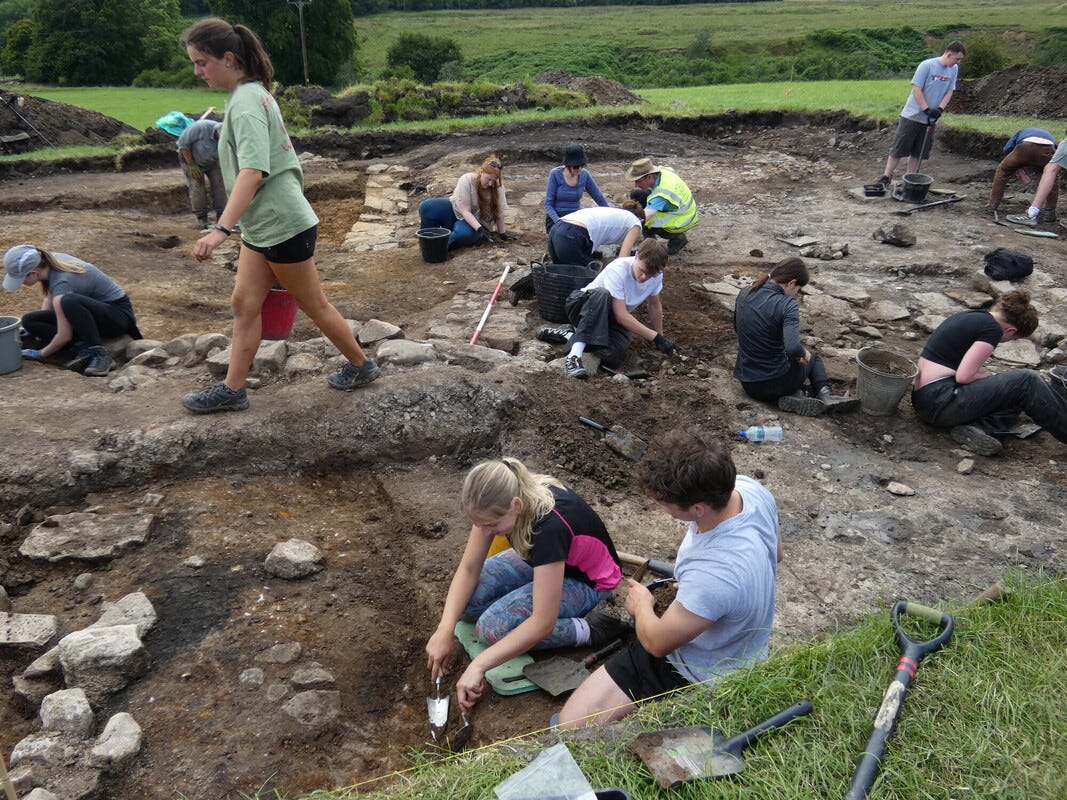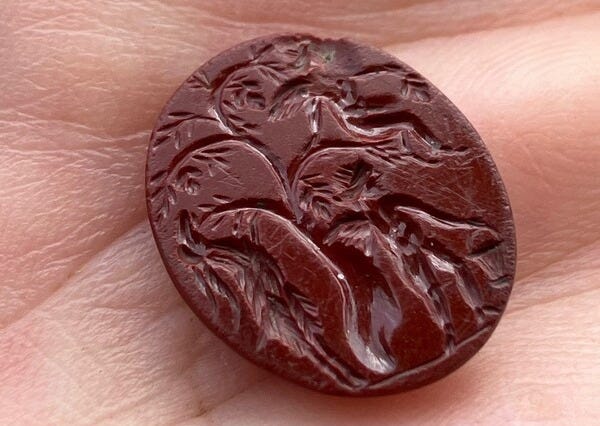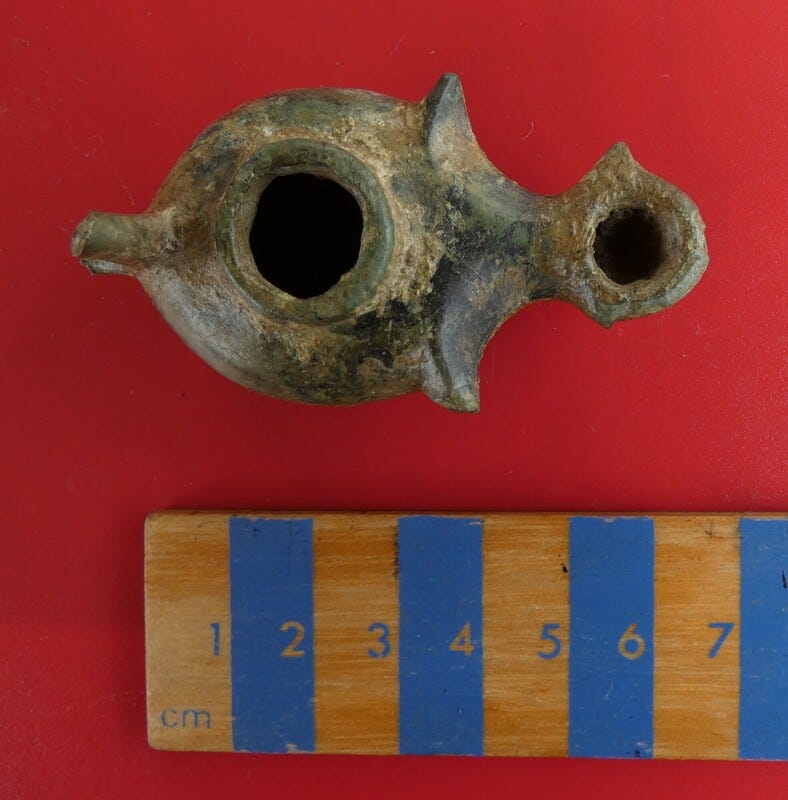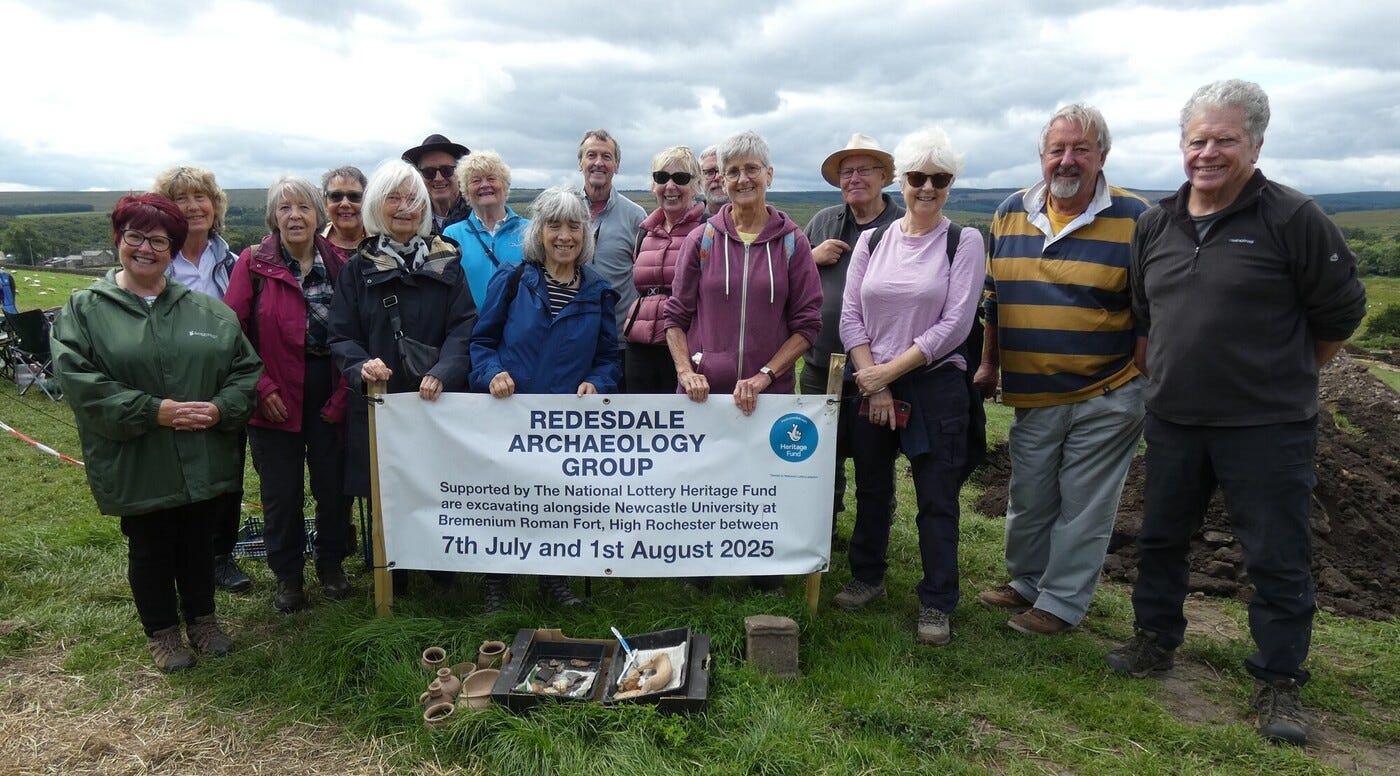Secrets of Bremenium revealed in record dig
Plum find tops the list of discoveries at Roman outpost fort. Tony Henderson reports
Excavations at an outpost Roman fort in Northumberland have proved surprisingly fruitful.
The fifth consecutive season of digging at Bremenium fort in High Rochester in Northumberland National Park has delivered more artefacts and structural discoveries found than ever before.
Waterlogged conditions in the lower parts of a trench resulted in the survival of organic material including a preserved piece of fruit, possibly a plum.
Backed by National Lottery Heritage funding to the Redesdale Archaeological Group (RAG) the project brings together volunteers, Newcastle University students, archaeologists and the local community.
The excavations revealed: Roman pottery from across the Empire, including Samian Ware from Gaul and amphora, one of which, made in Northern Spain, may have been used to transport olive oil or wine to the fort. Military items such as a spearhead and a slinger’s lead shot.
Personal items such as a votive oil lamp usually used decoratively to light altars, and a lead seal for official documents. Jewellery: two intaglios, which are engraved gemstones used for jewellery, one of which is of exceptional quality, and several brooches, including intact dolphin-style pieces with preserved enamelling.
Wall heights and construction layers suggest a building was rebuilt at least three times, with earlier phases demolished and covered in clay before new construction began.
Chris Jones, historic environment officer at Northumberland National Park Authority, said: “The archaeology of High Rochester continues to reveal its secrets, and it’s inspiring to see so many people, of all ages, engaged in the uncovering of their shared heritage.
“Community led projects like this help us to better understand one of the most important sites in the national park, improving the advice we give to the farmers and land managers who look after our shared heritage.”
Bob Jackson of Redesdale Archaeological Group, who has overseen several seasons at the site, said: “This year’s finds are exceptional, in both quantity and quality.
“The range of pottery and metalwork, especially the amphora and the intact brooches, offer new insights into trade, craftsmanship, and daily life at Bremenium. It’s a privilege to work with such a committed team.”
Community involvement included children’s charity Kid’s Kabin, and North Tyne Youth community group, North East Sight Matters through the national park’s Healthy Park, Healthy People project, and North Tynedale University of the Third Age.
The National Lottery Heritage Fund contributed nearly £50,000 towards running the dig, as well as Newcastle University and RAG.
The original fort may date to the late first century in support of military operations in southern Scotland. It was the most important outpost north of Hadrian’s Wall and could warn of attacks from the north.
The fort was located on what would later become known as Dere Street, the main overland route north on the eastern side of Britain. It was a strategically important point, as evidenced from a number of Roman marching camps to the north-west of the fort.
A building inscription records the “First Loyal Cohort of Vardulli, Roman citizens, part-mounted, one thousand strong.” The name of this particular unit appears on over 20 per cent of the inscriptions recovered from this site.
The Vardulli were originally from the Basque region of Spain.





